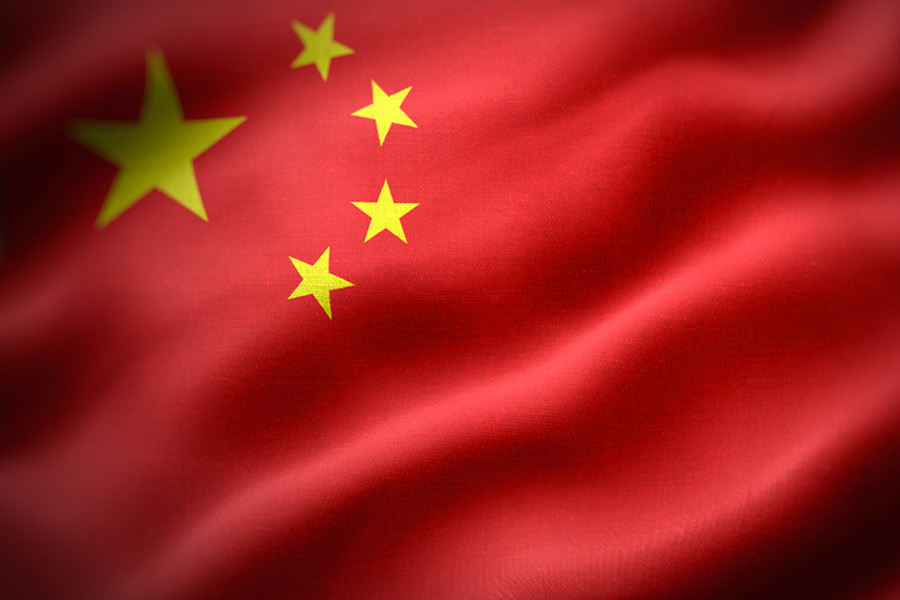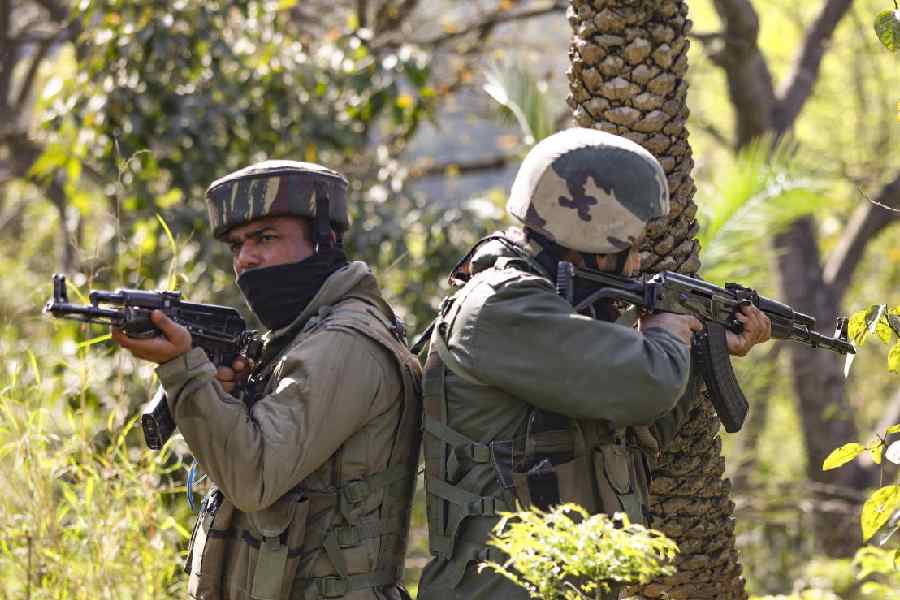|
|
| Going Downhill : Railway tracks in Ghum; (foreground) Subash Ghisingh |
Ajoy Edwards can?t forget the year, for 1987 changed his life for ever. The Nepali restaurateur was then a student of a public school in Darjeeling, in the throes of a violent Gorkhaland agitation spearheaded by Subash Ghisingh of the Gorkha National Liberation Front (GNLF). Like many of his generation, the 13-year-old wanted to do his bit for a separate homeland for the Gorkhas.
The moment finally arrived one drizzly morning. Waking up early, he pulled out the cache of arms he had stockpiled over the last few days: a revolver, five bullets, two teargas shells and a bomb. The boy slipped these into his satchel. Angry that his school was ?defying? the raging statehood movement by staying open, he wanted to ?blow up? the principal?s office. A teacher caught him before he could pull it off ? and his parents spirited him off to his uncle?s in Nagaland.
The agitation pretty much ?finished off? his schooling ? he was expelled and never taken back. But he didn?t mind then, for his faith in Ghisingh was implicit. Edwards, who comes from a well-known Darjeeling business family that runs a popular chain of coffee shops called Glenarys, was ready to make any sacrifice for Gorkhaland.
Eighteen years later, Edwards seems disillusioned. For all the sacrifices made during the two-year-long agitation, which saw more than 1,000 people killed, Gorkhaland is still a dream. And Ghisingh?s track record as chairman of the Darjeeling Gorkha Hill Council (DGHC), the ultimate fruit of the movement, is dismal. Not much has happened in terms of development in the hills over the last one-and-a-half decades. If anything, corruption is on the rise. Edwards?s faith in Ghisingh is no longer unshakeable.
So when Ghisingh threatened to paralyse the hills with a series of general strikes a few weeks ago to demand the postponement of the election to the council, Edwards gathered other ?like-minded? people and staged a protest against Ghisingh?s move. This was the first time in 17 years ? since Ghisingh signed a peace accord with the state and Union governments and accepted the autonomous council in August 1988 ? that the people of Darjeeling had risen up against Ghisingh.
?We are against all kinds of bandhs, whosoever calls them. We have suffered enough. We don?t want to suffer again,? Edwards, now 31, says.
Losing ground
The writing on the wall was clear enough for Ghisingh to read ? and understand. He called off the agitation as soon as the West Bengal government promised to look into his demand.
Ghisingh may still be the GNLF boss, but the aura of invincibility that he once had around him is all gone. ?People are now openly critical of him for his autocratic style of functioning and for the lack of development in the hills,? Durga Kharel, a lawyer at the Darjeeling district court, says. If the regular accounts of GNLF infighting and DGHC mismanagement in local Nepali newspapers are anything to go by, Ghisingh is clearly in trouble. Even GNLF sympathisers acknowledge that corruption is rife, and that most of the 28 party councillors, who head different departments in the council, have failed to deliver. ?There is a strong nexus between a group of contractors and a few councillors,? says a GNLF watcher.
More and more people are accusing the leadership of nepotism, and there is a growing demand for doing away with the old guard. ?There is no doubt that people want to see new faces as councillors in several areas,? Pranay Rai, general secretary of the GNLF-affiliated Darjeeling Gorkha Hill Transport Joint Action Committee, says.
This, in a way, explains why Ghisingh has been reluctant to go to the polls. Elections to the council, which has 28 elected and 14 nominated members, have been postponed three times in one year at Ghisingh?s insistence. In its attempt to avoid trouble in the hills, the Bengal government, in consultation with the Centre, amended the DGHC Act in the second week of March to let Ghisingh continue as a ?caretaker? administrator after the term of the present council ran out on March 25.
Ghisingh is, clearly, losing ground in the hills. ?He is a discredited leader. His popularity has gone down and he is scared of losing the election,? says Asok Bhattacharya, Bengal?s municipal affairs minister and the CPI(M) bigwig from Siliguri. ?So, he wants to remain in power as a caretaker administrator without facing the electorate.?
What?s made things difficult for the GNLF leader is the emergence of a united Opposition in the Darjeeling hills over the last one year. The Opposition parties were always fractious, splitting each other?s votes in the DGHC elections. But casting aside their differences, the three main anti-GNLF parties ? the All India Gorkha League, the Communist Party of Revolutionary Marxist and the Gorkha National Liberation Front (C) ?joined hands last year and floated an umbrella organisation called the People?s Democratic Front.
Later, they invited both the CPI and CPI(M) to join the fold. It was a pivotal decision as the CPI(M), the ruling party in Bengal, has long been a pariah in the hills for opposing the Gorkhaland movement, which had cost the lives of many party activists and led to a split in the CPI(M) in Darjeeling. But now they have a common goal: oust Ghisingh from power ?at any cost?, as Darjeeling MLA D.K. Pradhan, a GNLF(C) leader, puts it. Madan Tamang, the Gorkha league president and a convenor of the alliance, says the hill parties need the CPI(M) for ?strategic? reasons. ?Only the CPI(M) can put pressure on the state government and ensure a free and fair election to the council, which Ghisingh has always won using his money and muscle power,? the one-time Ghisingh associate says. The CPI(M) did put pressure on the state government to ensure that the hill council had an all-party interim board after its term expired on Friday, but the move was finally scuttled by Ghisingh who had himself installed as the sole caretaker of the council.
Battle begins
For the CPI(M), however, the battle to ?retrieve? Darjeeling has just begun. The party, once a strong political force in the hills, still smarts from the loss of control over the hill affairs to Ghisingh 17 years ago. ?A new situation has emerged in the hills and we hope to play a significant role in the coming days along with other Opposition parties,? Bhattacharya says.
Ghisingh, a canny politician, realised that a united Opposition could spell disaster for him. After all, the four-per-cent-gap between the votes his GNLF and the combined Opposition garnered was too narrow for comfort in the 1999 election. So as the March 26 deadline for the election approached, the wily politician raised the bogey of Nepali Maoists sneaking into Darjeeling and demanded that the council be upgraded to meet the emerging situation. In the end, the state government, officials said, had little option but to postpone the election. For the state government, turning down Ghisingh might have opened a can of worms, something that the chief minister wanted to avoid, especially when Buddhadeb Bhattacharjee was inviting foreign investment to Bengal.
Ghisingh had already dropped broad hints that he wanted Darjeeling to be brought under the Sixth Schedule of the Constitution and given wide administrative and financial powers ? a demand that the government finds unacceptable.
As of now, what Ghisingh has got, in the words of a bureaucrat, is a glorified zilla parishad. Of some 58 departments, only 27 have so far been handed over to the hill council, made up of the hill subdivisions of Darjeeling, Kalimpong and Kurseong.
Over certain key departments, the council only has ?half? control. For example, the DGHC has primary and secondary education under its fold, but the higher education is still with the state government. This has, not surprisingly, resulted in an administrative ?hotchpotch,? leading often to frictions and delays, a district administration official says. The DGHC funds, too, have been drying up, with the state government facing a severe cash crunch. According to Dipankar Mukherjee, secretary to the state municipal affairs department, the government?s contribution to the council?s planned budget has lessened because of the ?financial situation?. To help DGHC meet the shortfall, he says the state government has urged the Centre to double its special assistance from Rs 22.23 crore.
Money matters
But there is nothing to show for the money that has been pumped into Darjeeling. The state government still spends over Rs 150 crore annually on the council. ?The entire hills could have been paved with gold with so much money,? Pradhan, the local MLA who had helped draft the GNLF?s constitution, says. ?After all, the three hill subdivisions barely have a population of 7,00,000 people.?
The residents, clearly, feel let down by Ghisingh. Advocate Rajesh Chettri recalls how Ghisingh promised to solve the perennial water scarcity of Darjeeling, saying there would be so much water that every house would have a swimming pool. ?Before the GNLF came to power, we used to buy water in summer. But after 16 years of its rule, we now buy water year-round,? he says.
The grouses keep pouring in. Pradeep Lama, general secretary of the Darjeeling Association of Travel Agents, accuses Ghisingh of neglecting tourism, Darjeeling?s economic backbone along with tea. He says Bengal has stopped promoting tourism in Darjeeling as the department is now under DGHC. What galled tour operators the most was Ghisingh?s recent statement describing tourism as a minor economic issue for Darjeeling. ?The DGHC chairman has refused to see us despite our all requests,? Lama says. ?We don?t know whom to turn to.?
That, many believe, is also the crux of the problem. Ghisingh remains the sole leader of stature in Darjeeling ? and despite the growing resentment against him, a large section still supports him. Deepak Gurung, GNLF?s Darjeeling branch committee president, holds that the DGHC has built roads, bridges and culverts and community halls in villages. ?We have a leader with vision and his only mission is to develop the hills and the people,? he says.
Simple living
What, however, draws his loyalists to Ghisingh is his uncanny knack of getting his way even when he is perceived as being down ? and, of course, his simple lifestyle. The DGHC chairman lives in a rented house and has no attendants. ?He even polishes his own shoes. He is the simplest man I have ever seen,? Gurung says.
Gurung calls the chief minister a ?positive person who does not want disturbance in the hills.? But he feels Ghisingh is unlikely to give up his demand for more autonomy and power. ?If the child does not get what he wants, he will continue to cry. It?s for the mother to pacify him,? the close Ghisingh associate says.
The memory of the Eighties? violence is still too raw to fade out. Ajoy Edwards is sometimes haunted by the severed heads he saw hanging from a lamp-post at the peak of the Gorkhaland agitation. ?I am still a GNLF supporter. But I don?t want trouble or violence any more,? he says. Like most in today?s Darjeeling, he wants peace. If peace is given a chance.












